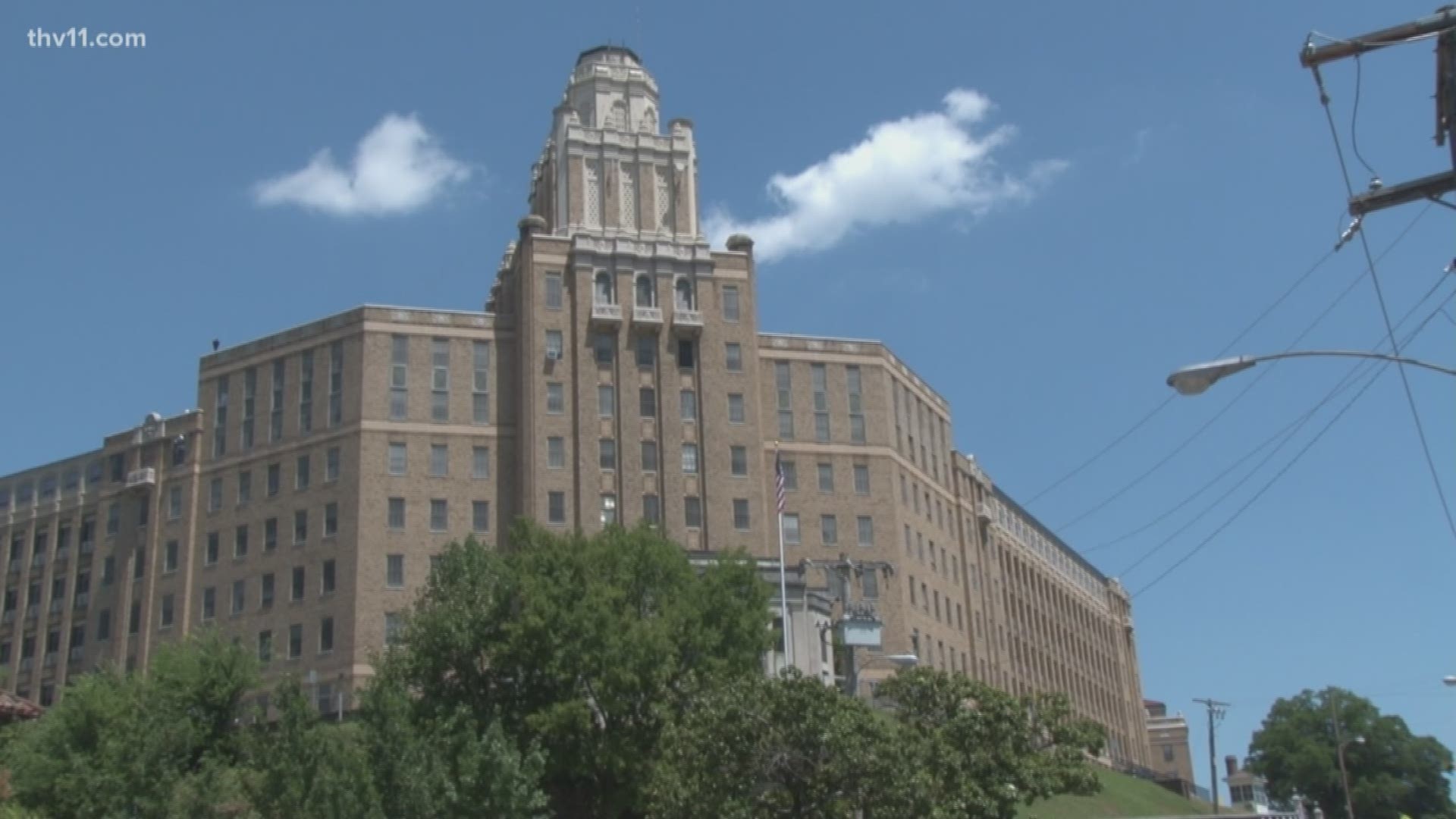HOT SPRINGS, Ark. — The move to end a state program that trains people with disabilities to find careers means the towering Hot Springs Rehabilitation Center will soon be empty.
The timeline for shuttering the old Army-Navy Hospital spurred concerned city leaders to form a committee to keep the sprawling complex from becoming a hazardous eyesore in the heart of the downtown tourist district.
"The decision to terminate that property set about the law of unintentional consequences," said Dr. Jack Porter, a retired dentist and member of the executive committee of an ad hoc panel formed by the Hot Springs Chamber of Commerce.
State officials are ending the residential programs run by the Arkansas Career Training Institute to reduce costs.
The agency says they can deliver the same services to people with disabilities in smaller satellite facilities more efficiently. The announcement in May meant layoffs and a hasty plan to vacate the landmark.
"That's a 210,000 square foot building. That's a huge building and not all of it was being used," said Porter. "And the campus itself is a 21-acre campus up there. It actually has 31 buildings."
Closing ACTI also started the clock on giving the building back to the ones who built it in the 1930's: the federal government. The state signed a lease in 1960 and Congress signed off on allowing the building to become the Hot Springs Rehabilitation Center.
It stipulated that it could only be used as a hospital of some kind. That means inevitably the Pentagon will oversee the property, and that worries the committee.
"They're going to put a fence around it, and it's going to sit there like the V.A. hospital in Little Rock right now," Porter said. "That is unacceptable to us."
Complicating the hand-off is what the committee sees as a real security threat, influenced by the memory of the fire in the abandoned Majestic Hotel in 2014, just down Central Ave. from the old hospital.
"I could envision a fire starting in the back of there and having it climb all the way up the national park mountain, so security is paramount," Porter said, noting that the property is squeezed between Bathhouse Row and the acres of National Park forest topped by the Observation Tower.
Porter adds that the city has placed microwave and radio towers on the building that they won't be able to maintain if it is shuttered by the federal government.
The building has also been used as a hospital since the 1880's and he expects hazardous waste to be buried on the grounds.
"Environmental laws didn't exist back then," Porter said. "So there are a lot of environmental issues."
And ironically, that could end up being the surest way the whole complex avoids being torn down.
The committee will seek a Phase I environmental assessment. If they determine the campus is a "brownfield," it becomes eligible for federal Superfund money to clean it.
Porter says that will likely be the only money the people here could ever expect from Washington and why they will ask the state for help paying for security and the assessment.
"Can we keep that building on life support long enough to do that?" he asked. "If that building goes down for three months, it will be useless after that point, and the federal government deals in years and decades. We're dealing in months and years."

